
- Home
- About Us
- Advisory Board
- Products
- Services
- News
- Distributors
- Contact Us
- Search
- Lot I-10-7, D7 Street, Saigon Hi-Tech Park, Tang Nhon Phu Ward, Thu Duc City, HCMC(+84) 28 7301 3688Info@wembleymed.com.vn
1.1. Introduction
Short peripheral venous catheters (PVCs) are among the most commonly used consumables in hospitals. Nearly half of hospitalized patients in Europe have a PVC in place. Despite their usefulness, PVCs frequently fail due to complications such as phlebitis, thrombosis, extravasation, or infection. Replacement requires a new invasive procedure, which increases both risks and costs. Phlebitis rates range from 30–60%.
Preventive measures include aseptic insertion technique, skin antisepsis, catheter stabilization, and transparent dressings to allow observation of the insertion site. Flushing before and after medication administration helps maintain catheter patency, prevent incompatibility reactions, reduce thrombosis and phlebitis, and minimize biofilm formation. However, flushing is rarely addressed in infection prevention guidelines and is often poorly documented.
Pre-filled saline syringes offer unit-dose convenience, save time, and reduce contamination risks compared to manually prepared syringes, potentially improving safety and lowering costs. This study aimed to evaluate the impact of using pre-filled saline syringes on PVC failure rates and associated risk factors.
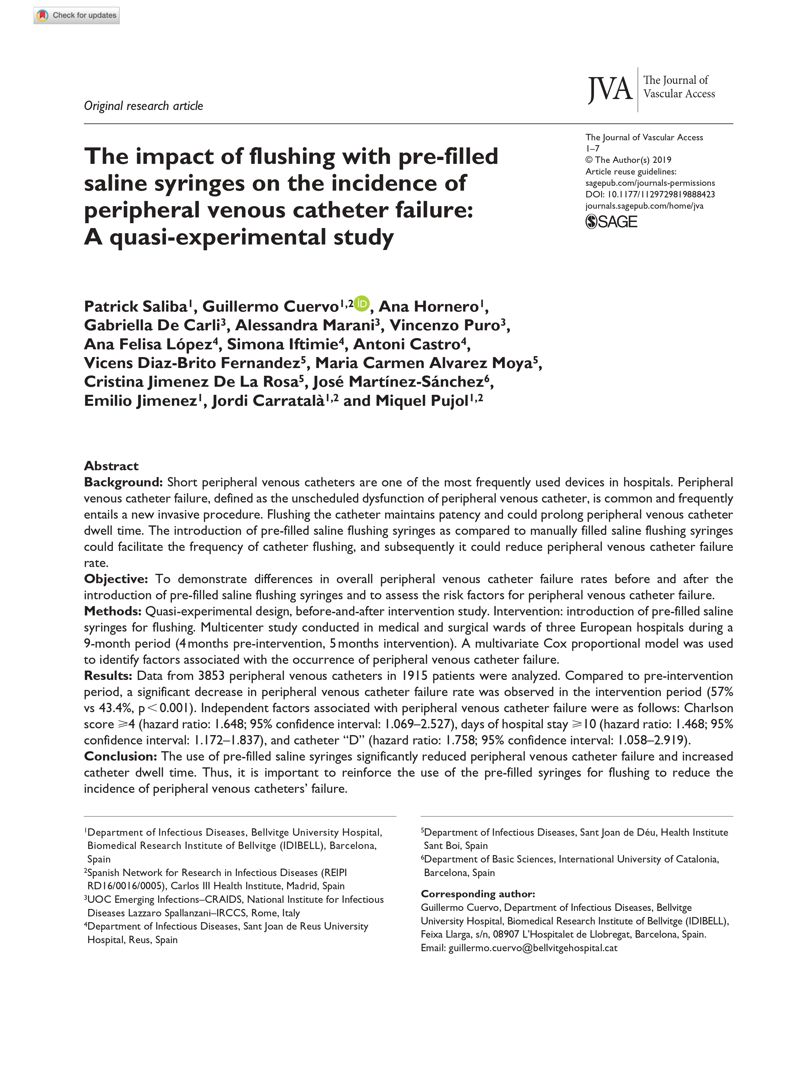
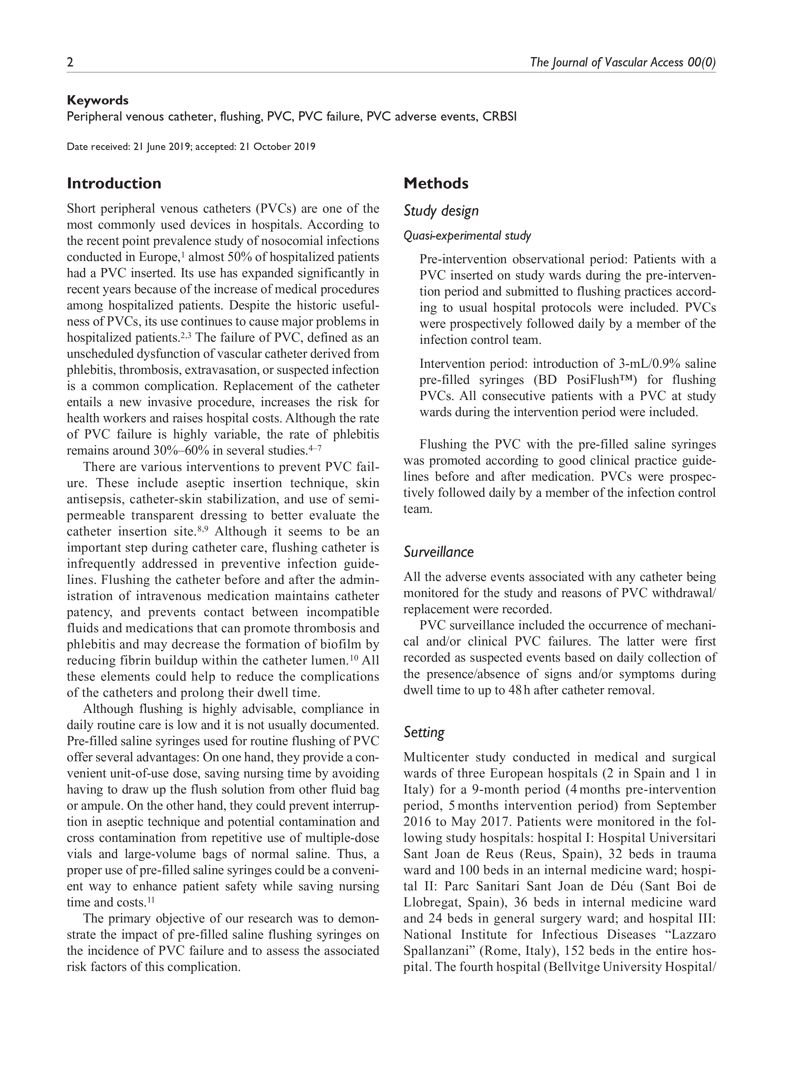
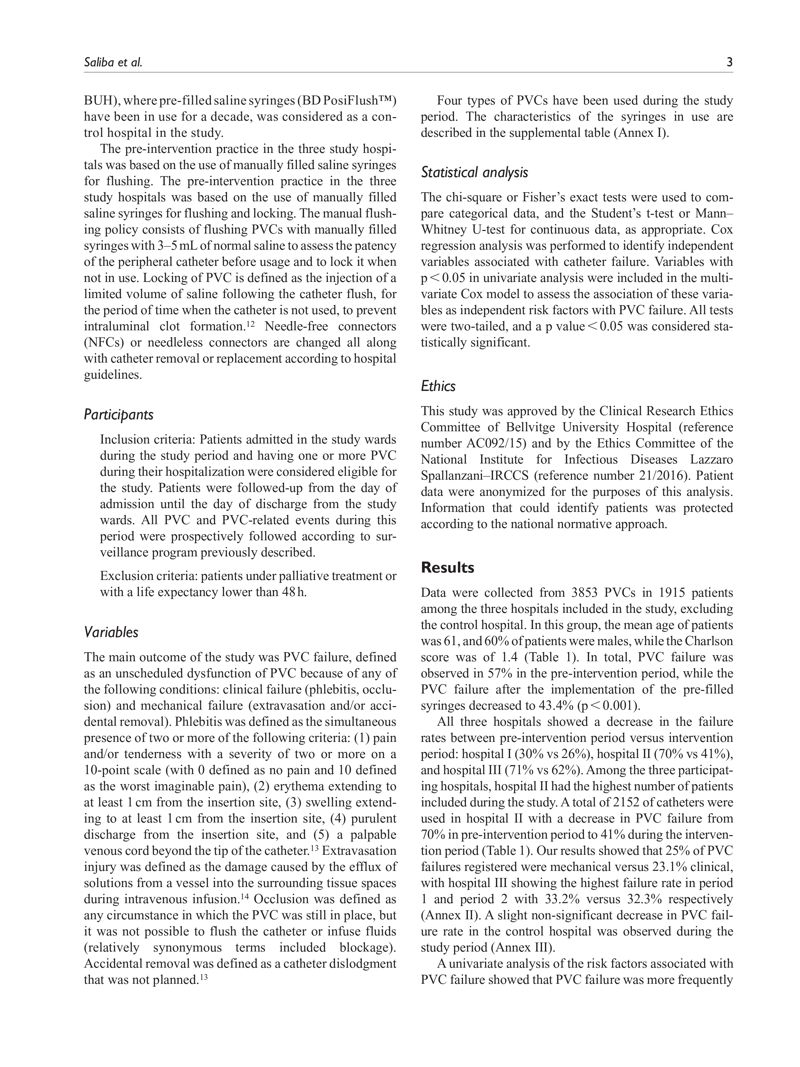
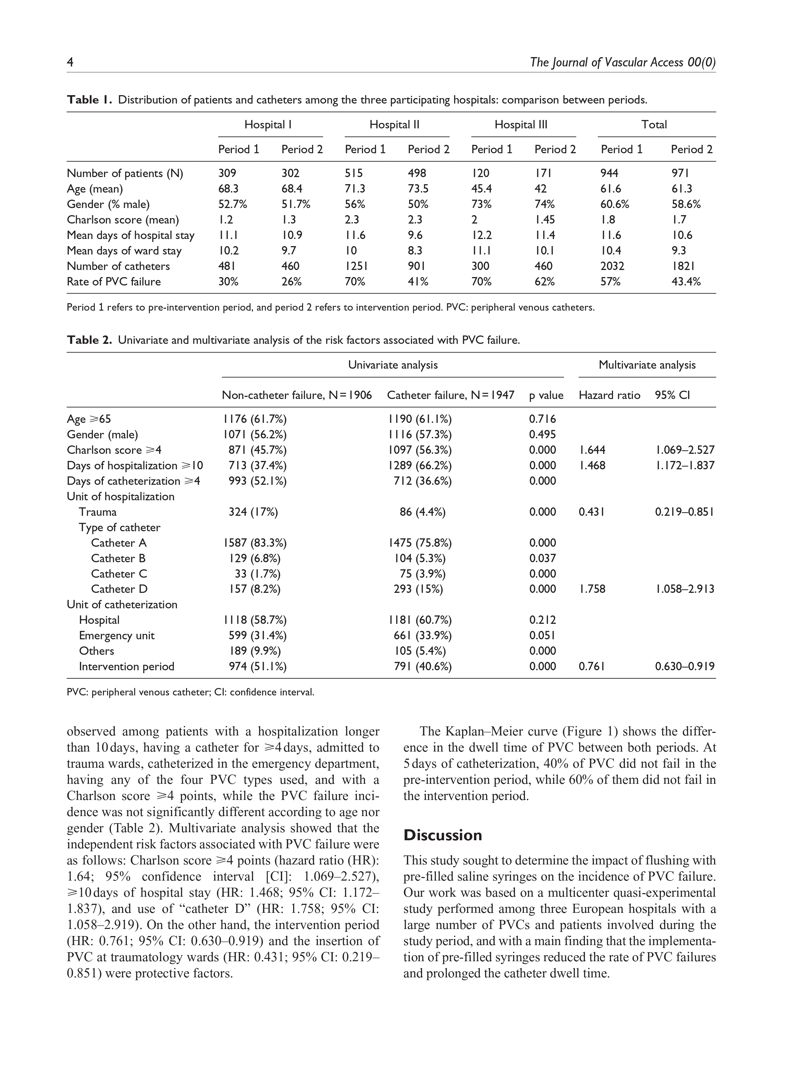
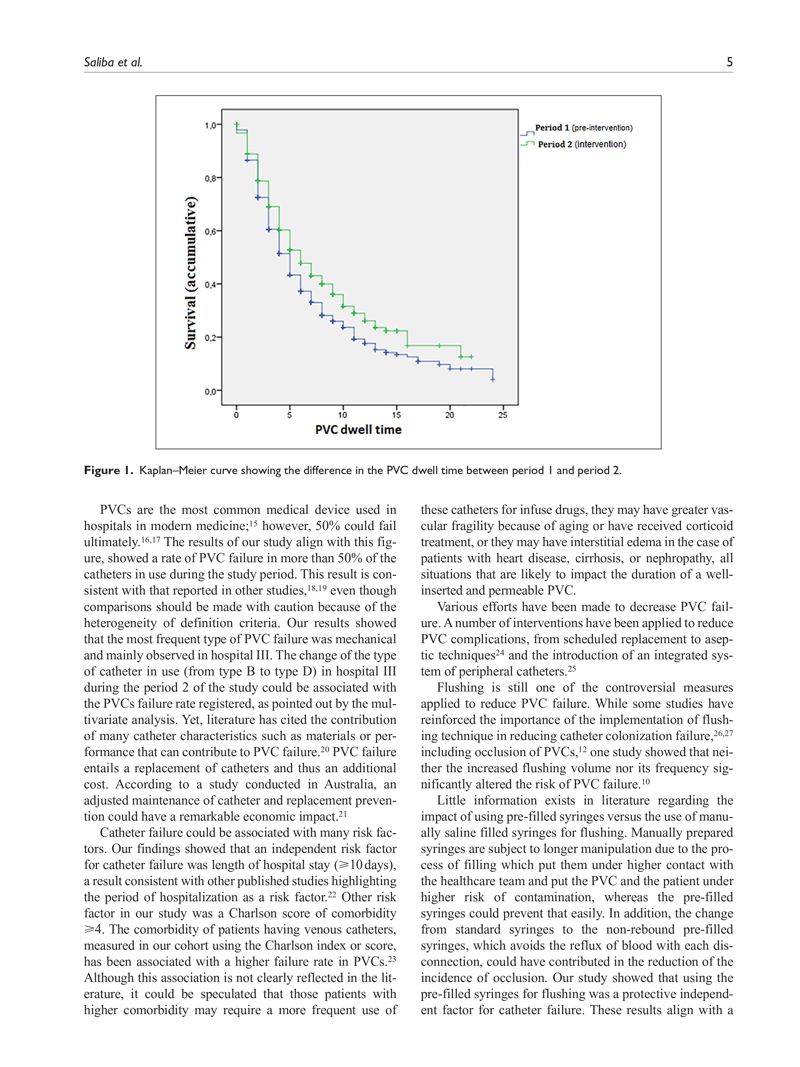
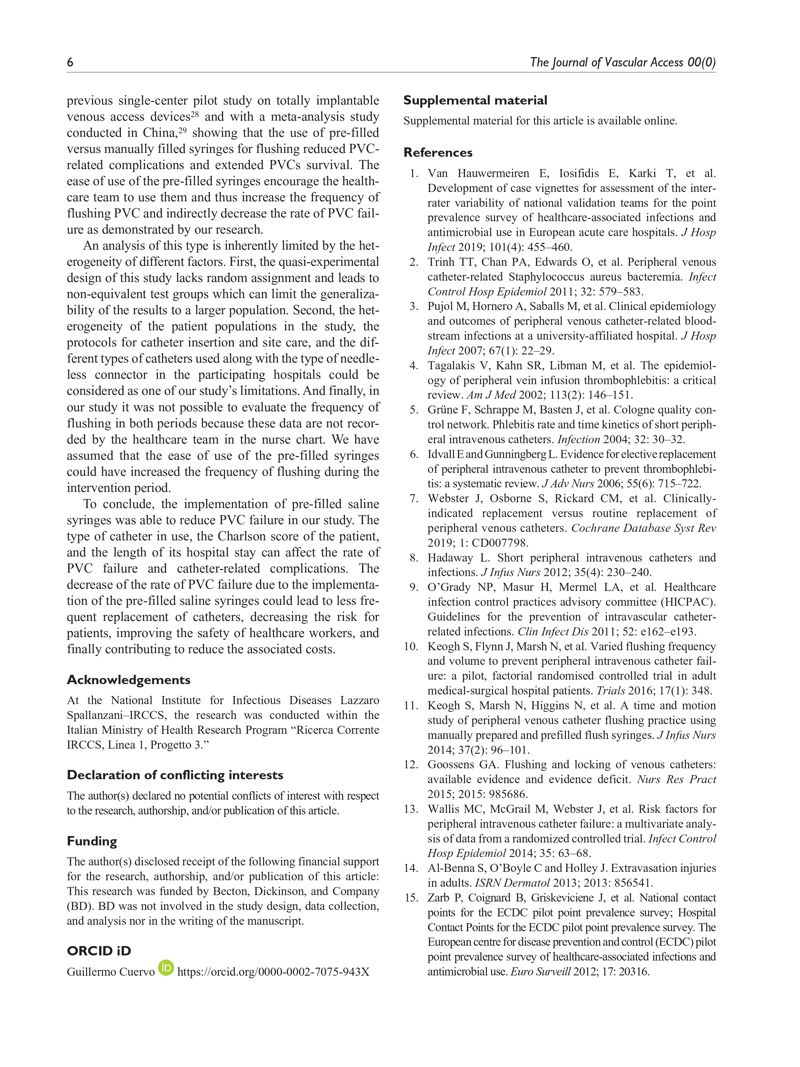

1.2. Methods
A quasi-experimental before–after study was conducted in the medical and surgical wards of three European hospitals over nine months (four months pre-intervention, five months intervention). During the pre-intervention phase, manually prepared saline syringes were used; during the intervention phase, 3 mL/0.9% saline pre-filled syringes (BD PosiFlush™) were used. PVCs were flushed according to guidelines before and after drug administration. Infection control teams monitored daily. Outcomes included PVC failure due to mechanical or clinical reasons. Inclusion criteria: hospitalized patients with at least one PVC. Exclusion criteria: palliative care or life expectancy under 48 hours. The primary outcome was unscheduled PVC dysfunction. Statistical analysis was performed using Cox regression. Ethics approval was obtained.
1.3. Results
Data from 3,853 PVCs in 1,915 patients were analyzed. The mean patient age was 61 years; 60% were male. PVC failure rates dropped from 57% in the pre-intervention phase to 43.4% during the intervention (p<0.001). All hospitals reported reduced failure rates: Hospital I (30%→26%), Hospital II (70%→41%), and Hospital III (70%→62%). Mechanical failures (25%) slightly outnumbered clinical failures (23.1%). Independent risk factors included a Charlson Comorbidity Index score ≥4, hospital stay ≥10 days, and catheter type D. Protective factors included the intervention period and insertion in a traumatology ward. Kaplan–Meier analysis showed longer catheter dwell times during the intervention.
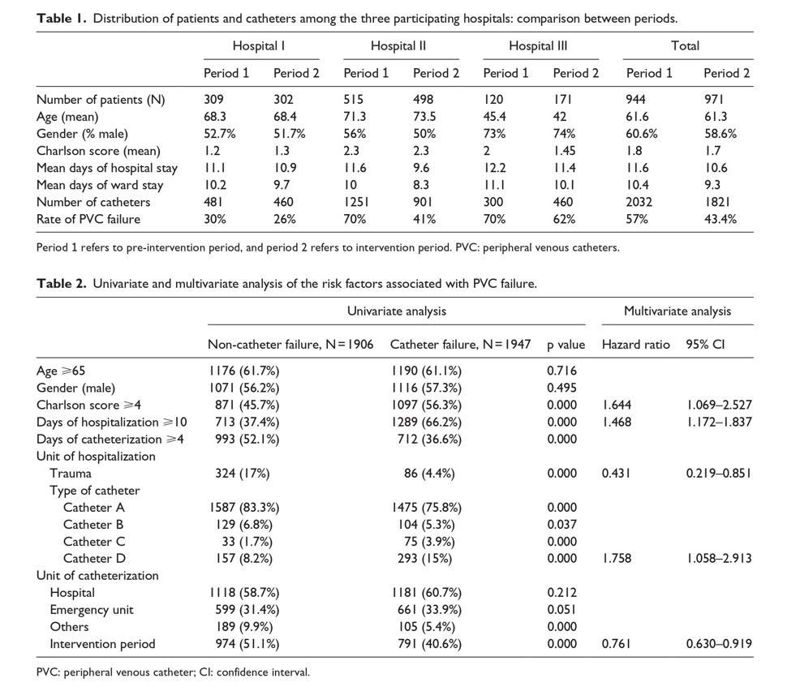
1.4. Discussion
This multicenter study confirmed that pre-filled saline syringes reduce PVC failure rates and extend dwell time. Failure rates (>50%) are consistent with the literature. Mechanical failures predominated, especially in Hospital III, possibly due to a change in catheter type. Longer hospital stays and higher comorbidity (Charlson ≥4) increased failure risk, potentially due to greater catheter use, vascular fragility in older patients, corticosteroid therapy, or interstitial edema in patients with heart failure, cirrhosis, or renal disease.
Flushing practices remain debated; previous studies on flushing frequency and volume have shown mixed results. Pre-filled syringes reduce handling, lower contamination risk, and decrease occlusion rates compared to manually prepared syringes. These findings align with previous studies and meta-analyses. Limitations include the non-randomized design, heterogeneous populations, procedural variations, differences in catheter types, and lack of data on flushing frequency.
Overall, adopting pre-filled saline syringes may help reduce PVC failure, improve patient safety, and lower healthcare costs.
The WEMSYIN pre-filled saline syringe is a safe, convenient, and time-saving solution that enhances the efficiency of intravenous line maintenance and catheter care in hospitals and clinics.
Developed and designed by WEMLEY MEDICAL, the product is manufactured on a fully automated production line within a Class 100.000 cleanroom and monitored under an internationally standardized quality management system, offering the following key advantages:
For further product information, please contact our hotline at +84 28 7301 3688 for prompt support.
References: The impact of flushing with pre-filled saline syringes on the incidence of peripheral venous catheter failure: A quasi-experimental study